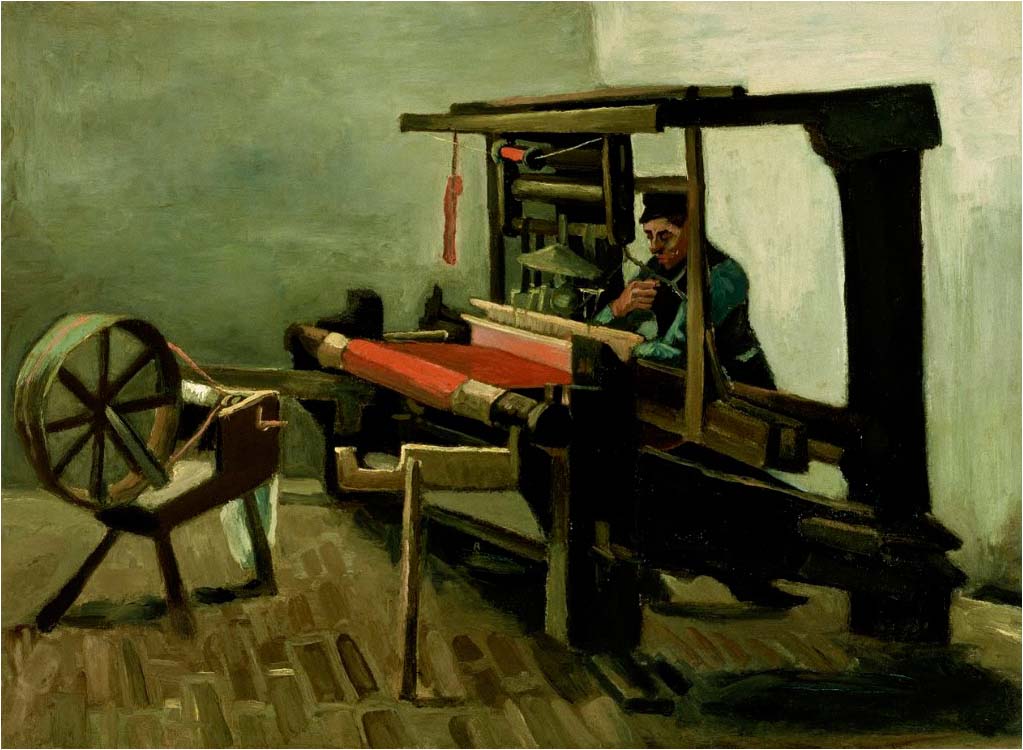Living in the countryside meant self-sufficiency, including your clothing. Made of wool and/or linen. Sheep provided wool, and the flax plant (after intensive processing) produced linen.
Weavers are a very old profession. This is an ancient technique for making textiles from threads. To weave, a number of threads are stretched parallel to the loom. These stretched threads are called the warp. Then, one by one, other threads are inserted perpendicular to these, between the warp, into the loom. These threads are called the weft. These threads are pressed tightly together. The space in which the loom is located should not be too warm and should be somewhat damp, so that the threads do not break easily.
In this area, flax was grown and processed for personal use on small plots. Over 50 looms were located in Horst and the surrounding area. There were also blue dyers and lace makers active. Melderslo has many references to flax processing, such as a “Vlasven” (Flax Pond), residents of Melderslo are called “Vlasköp” (flax heads) during carnival, and the community center is called “De Zwingel” (a tool used for flax processing).
